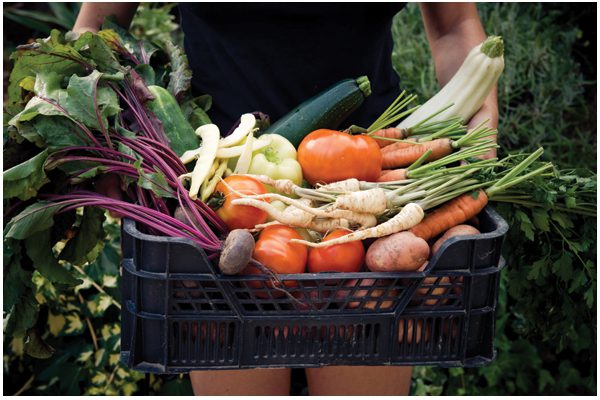The teenage years can certainly be a challenging time both for young people and their families, with external pressures (both socially and academically) combined with rapidly changing bodies and increasing hormone levels. Teens also begin to make their own choices about food, and parents have less influence over what they eat, so it is important they have the right information to make healthy food choices.
Diets rich in fruits and vegetables have been shown to help control weight and are also linked to a lower risk of chronic diseases and some cancers; however, most teenagers are falling short of the recommended daily amounts. Findings from the recent National Teens Food Survey (NTFS II), carried out by the Irish Universities National Alliance (IUNA), supported this by showing that teenagers are only getting an average of 3 portions of fruit and vegetables daily, which is well below the recommendation of 5-7 portions daily.
Many factors influence the foods that teenagers eat. Peers, time constraints, lack of healthy eating education and more access to unhealthy food choices are just a few of the reasons teenagers may not eat enough fruit and vegetables. Many simply stated that taste put them off! However, it is certainly not too late to convince teens why fruit and vegetables can be tasty, beneficial for their health and to try new ways of including these antioxidant-packed foods.
As teens tend to be focused on the short term rather than thinking about their health in the longer term, talk about fruit and vegetable consumption in the context of now so that they sound more appealing to this age group. For example, talk about the benefits they can have on their skin, concentration levels during exams, digestive health or even sporting performance.
Similar to the home environment, secondary schools can also play a key role in promoting increased consumption of fruit and vegetables in teens. Teenagers spend a significant proportion of their day in the school environment and there consume at least 30% of their daily calorie intake; therefore, schools present a massive opportunity to promote healthful behaviours in teenagers. School-based interventions such as increased offerings in vending machines and school cafeterias along with healthy eating education have been shown to be successful in changing teens’ attitudes and behaviours towards healthier eating habits: less about what kids should not be eating and more about how these foods benefit us.
With the rising rates of disordered eating among teens, the important thing we can do as parents and educators today is to support and encourage our teens around healthy eating. We can show them what good nutrition looks like for their developing bodies, and, most importantly, help teens develop a positive relationship with food, whilst avoiding strict rules or restrictions around food.
Ways of helping your teen get more fruit and veg at home:
- Listen to them: Shop with them and ask them to choose a new vegetable to try and to choose all veggies for one meal
- Be a good role model: It is important that you and your family all eat and enjoy fruits & vegetables
- Accessibility: Make sure there are plenty of fruits and vegetables in the house
- Cook together: Learning to cook is an important skill for young people. Encourage them to prepare their favourite vegetables, either raw or cooked.
- Eat together as a family: Although sometimes difficult, try to make this a priority.
Top Suggestions
- Add veggies to pasta sauces, stir-fries and curries
- Choose to have fruit as part of snack option (e.g. fruit slices with nut butter work a treat)
- Slice carrots, cucumber, peppers into sticks and keep them in the fridge for snacks
- Aim to have at least one plant-based meal option for dinner during the week
- Smoothies are also a great way of increasing fruit and veg in the diet
- Don’t forget that frozen fruits and vegetables are just as nutritionally sound as fresh versions
- Adopt a family system whereby there is always a colourful fruit or vegetable at each meal



